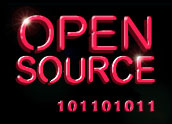
Open source seeded the cloud, 451 Research found five years ago — and those seeds have grown. Open source now plays an even more prevalant and important role — not only in cloud computing, but also in other, related areas, such as big data, DevOps and application containers.
One can consider any layer of cloud computing and see the impact. Infrastructure as a Service, for example, no doubt has experienced an impact from open source software such as Eucalyptus (which was acquired by HP), CloudStack and OpenStack.
There continues to be significant, proprietary competition in the space, including Amazon Web Services and Microsoft’s Azure, but both have deepened their support for open source components and systems such as Linux, NoSQL databases, PHP and other open source languages — and more recently, Docker and containers.
Despite some skepticism around OpenStack and production deployments, significant progress and maturity in the project were evident over the last year.
More recently, vendors, end users, and investors have indicated that some of the biggest hurdles for OpenStack, such as networking, are rapidly being addressed. In essence, it seems the right itches are being scratched for the open-source cloud software.
Users and Devs Unite
This is in large part because of what I view as “Open Source Community 2.0,” a new wave of open-source software development, use and participation that is characterized as much by user involvement as by developer involvement.
New features, functionality, rewrites and releases of open source software are being driven by customers — by their direct experience using the software, working with vendors, and competing in their various industries.
It’s important to understand how the benefits of open-source software can change. There have been many cases of organizations originally seeking open source primarily for cost savings, but then later realizing other benefits, including performance and reliability.
There’s a similar scenario with the more iterative, collaborative and rapid approach to application releases known as “DevOps.” Speed initially seemed to be the main driver — but over time, efficiency and the ability to integrate with a greater variety of technologies also have emerged as key advantages.
Another example is Docker and containers, which not only are a good way to provide isolation in infrastructure and applications, but also dramatically reduce the time it takes to get new developers up and running, according to our 451 Research case studies.
Open source also plays a predominant role in the application layer and Platform as a Service. Many, if not most, PaaS components are open-source software, including languages and frameworks, databases, messaging, hypervisors, and Web servers.
In addition, many of the top enterprise PaaS platforms are based on open source software, including IBM Bluemix, Stackato and others in the Cloud Foundry PaaS community, as well as Red Hat’s OpenShift and Origin open source PaaS.
Big Data, DevOps, Containers
Open source continues to play a primary role in big data — building on open source technologies such as NoSQL databases, Hadoop, Cassandra and memcached with newer projects, including Apache Spark.
Open source software is still playing a major role in DevOps as well. Core DevOps tools such as Chef and Puppet have been joined by new software such as Ansible and Salt. All of these tools are open source software, and the vendors that support them continue to stress the importance of open source in terms of community, flexibility and efficiency.
Most recently, open source has emerged as a critical part of the rapidly emerging ecosystem around application containers.
While there were some concerns about competing container formats, what I saw was a healthy open-source situation that would serve as a discipline and driver for both Docker and the alternative Rocket. Since then, these two open-source communities have come together on the Open Container Format and Initiative for a converged container format.
The move does two important things.
One, it federates the Docker and Docker-like efforts to date for application containers, solidifying the Docker software as not only the de facto standard, but also the accepted, official standard — albeit one that may change as different projects and communities come together.
Two, it answers the demand of customers who are weary of vendor-specific efforts and standards confusion, as well as those of vendors such as Google and Red Hat, which have highlighted the need to unite the various application container efforts.
Container convergence, which will be eased due to the open-source nature of the various container pieces — including Docker, Rocket, Kubernetes, Mesos, and more — is also another reminder of the many advantages of open source that keep it prominent and pervasive in the cloud, as well as in enterprise IT in general.


















































